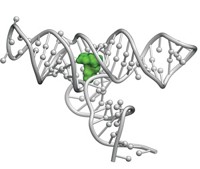Advertisement
Grab your lab coat. Let's get started
Welcome!
Welcome!
Create an account below to get 6 C&EN articles per month, receive newsletters and more - all free.
It seems this is your first time logging in online. Please enter the following information to continue.
As an ACS member you automatically get access to this site. All we need is few more details to create your reading experience.
Not you? Sign in with a different account.
Not you? Sign in with a different account.
ERROR 1
ERROR 1
ERROR 2
ERROR 2
ERROR 2
ERROR 2
ERROR 2
Password and Confirm password must match.
If you have an ACS member number, please enter it here so we can link this account to your membership. (optional)
ERROR 2
ACS values your privacy. By submitting your information, you are gaining access to C&EN and subscribing to our weekly newsletter. We use the information you provide to make your reading experience better, and we will never sell your data to third party members.
Start-ups
Arrakis reels in $75 million to drug RNA with small molecules
The start-up will use its series B financing to build a pipeline of cancer drug candidates taking aim at traditionally undruggable targets like Myc
by Ryan Cross
April 18, 2019

Three years ago, Michael Gilman was on the cusp on retirement. He had just agreed to sell his firm, Padlock Therapeutics, to Bristol-Myers Squibb in a deal worth up to $600 million. He was on his way to a board meeting when he ran into an old colleague, Jennifer Petter, who was starting a company to develop small-molecule drugs that target RNA.
Gilman thought the idea was crazy. Targeting RNA just wasn’t something that small-molecule designers did. RNA was historically viewed as a noodle-like molecule that didn’t do much except provide the blueprints for making proteins.
But the idea was so different that it planted a seed in Gilman’s brain. After a series of dinners—and several glasses of wine—he became convinced that drugging RNA with small molecules was as good an idea as any for his last rodeo. He joined Petter’s start-up, Arrakis Therapeutics, as CEO and launched the company with $38 million in series A financing in February 2017.
Over the past two years, that money helped Arrakis build up its platform for screening libraries of small molecules against RNA targets. Today, Arrakis is upping the ante with a $75 million series B financing that it hopes will begin moving some of its most advanced programs, mostly focused on cancer, into clinical testing.
For more than a century, chemists have largely focused their drug discovery efforts on finding compounds that target proteins, many of which have well-defined structures, like nooks and crannies, giving drug designers something for a small molecule to latch on to. Proteins lacking such structures have earned a reputation as being undruggable. That’s led Arrakis, and others, to think about taking down the messenger RNA molecules that encode the instructions for making the proteins in the first place.
One target at the top of Gilman’s list is a protein called Myc, which is found at high levels in a majority of cancers. Even though drug developers would love to inhibit this protein, its slippery structure has thus far been untouchable with small molecules. Arrakis has determined the structure of Myc messenger RNA, Gilman says, and discovered multiple small molecules that might inhibit the translation of the RNA into protein.
Right now, Arrakis is focusing almost entirely on drugging messenger RNA. It has a list of about 50 favorite targets, mostly related to cancer.
The firm is considering drugging a handful of noncoding RNAs, which regulate the expression of other genes, and viral RNAs. “But we can keep ourselves very busy drugging messenger RNAs for proteins that are highly understood, well validated, but otherwise undruggable,” Gilman says.
Arrakis is staying hush on the details of the Myc program and others at the company, but that’s not surprising. Finding druggable structures in messenger RNA at all is a counterintuitive idea that’s just beginning to percolate through chemistry departments and drug companies.
Last spring, researchers from the University of North Carolina and Novartis published a study suggesting that such structures might be more common than previously thought. Kevin Weeks, who led the study at UNC, has founded his own company, Ribometrix, which raised $30 million last fall. Other companies, including Expansion Therapeutics and Skyhawk Therapeutics, also raised significant sums in 2018 to develop small molecules that target RNA.
“I am thrilled that there is lots of capital coming into this space,” Gilman says. Although he won’t disclose a timeline for announcing more drug programs or moving them into the clinic, Gilman has made a decision regarding his own time. He has been CEO of both Arrakis and Obsidian Therapeutics, a cancer cell therapy company. Today, Gilman is stepping down as CEO at Obsidian and handing the reins over to Paul K. Wotton, who was formerly CEO of the cell therapy companies Sigilon Therapeutics and Ocata Therapeutics.
Gilman is now fully pledged to finding small molecules that target RNA. “I think we will be creating a whole new class of medicines here,” he says. “We want all RNAs open for business.”




Join the conversation
Contact the reporter
Submit a Letter to the Editor for publication
Engage with us on Twitter